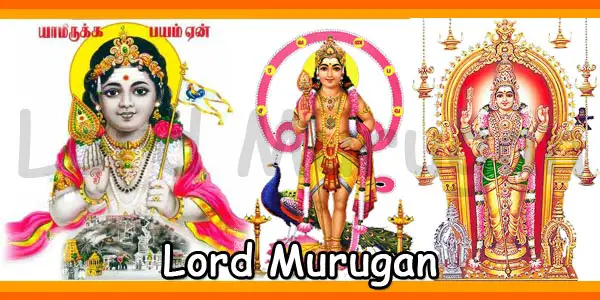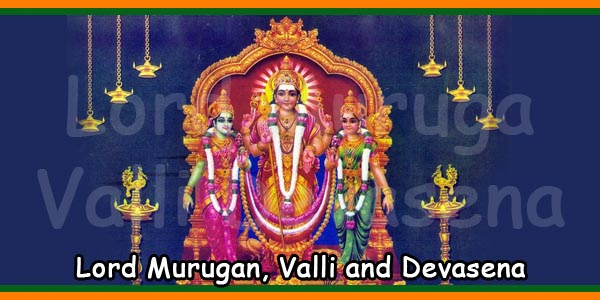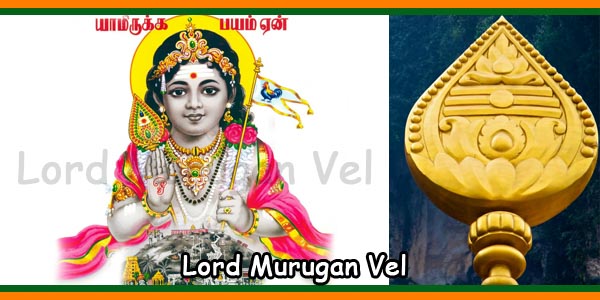The Kaumaras belong to one sect of the Hindu faith, who honour and worship Kumara, Skanda, Shanmuga or Karthikeya as the Supreme Being. The other five Hindu sects are Ganapathyam (worship of Ganesha), Saivaism (worship of Lord Siva), Vaishnavaism (worship of Lord Vishnu), Shaoram (worship of Sun) and Saktham (worship of Shakthi). This classification was made by the Saint Adi Shankara. According to Tamil literary works Thirumurukattruppadai and Paripadal, the Murugan worship is very ancient among the Tamils.

The work of Thirumurukattruppadai dedicated totally to the worship of Murugan, is attributed to Nakkirar, who was a distinguished poet of the early period. The poems in the Paripadal, which are completely in praise of Chevvel (The Red One), are the best literary works of ancient time available which assist the devotees to study about the worship of Muruga.
In addition to the above two works a number of references are available about Murugan in the oldest Tamil grammar book Tolkapiyam, which says that the mountain region is dear to Cheyon.
Porulathikaram also refers to a frenzy dance known as veriyadal, which is the dance of invocation Lord Muruga. This dance is performed by a person called Velan. He is so called because he holds a ‘Vel’ (spear) in his hand while he dances.
The Holy Vel (Spear) of Murugan:
The Vel of Murugan is a mystic divine weapon, using which He destroyed the demons. The Vel, which is regarded as Wisdom-Absolute, also conquers the inner demons or enemies of Avidya and Karma and liberates the Soul from transmigration.
The Vel bears a mysterious divine power and has been mentioned by Saint Arunagiri as the Mantra Vel, in one of his Thiruppugazh (Songs of praise of God).
As such, the symbol of this divinity, Vel, is worshipped in some of the Murugan Temples.
Vel is also used by the devotees who carry kavadis. The very word ‘Vel’ itself has the mystic powers to invoke the blessings of Murugan and hence devotees chant “Vel, Vel”, “Veera Vel”, “Gnana Vel”, “Shakthi Vel”.
Murugan and His Consorts:
Teyvayanai and Valli are the two consorts of Murugan. Teyvayanai is the daughter of Indran, the King of the Devas and Valli the beautiful daughter of the hunting tribe. It means the first one belongs to the Heavens and the latter to the hilly regions of Earth.

Paripadal describes as follows: “O Lord Muruga, may be willing to live in this world, even as you exist in the Heavens, you reached the tee of Katampu, the significance of which is difficult to understand even by the intelligent; you married Valli in order to make the people of this world live in contentment, in the same manner as you do for the Devas in the Heavens; which marriage is in fact a contrast to your marriage to Teyvayanai”.
The marriage of Teyvayanai to Murugan indicates that the Atman seeks the union with Brahmatman. Here, Teyvayani represents the Atman and Murugan the Brahmatman. The marriage of Valli with Murugan signifies that sometimes Brahmatman seeks the union of Atman. Other commentators as well as the Saiva Siddhanda Philosophers have interpreted Murugan’s consorts as representing His inherent energy. Teyvayanai represents the Energy of Action (Kriya-Sakthi) and Valli the Energy of Desire (Iccha-Sakthi). However, in actual worship, the ultimate reverence is reserved for Murugan, even though He is accompanied by Teyvayanai and Valli.
According to another belief, Teyvayanai and Valli are believed to be Lord Vishnu’s daughters. Lord Vishnu is regarded as Murugan’s maternal uncle and hence by his marriage Murugan acts as a link between the two sects – the Vaishnavaites and the Saivaites.
Lord of Six Faces:
Murugan is generally portrayed as having six faces and twelve arms. The poets prefer to address Him as “Arumugan”, which means “the Lord of Six Faces”.
The sacred functions of Murugan, having six faces, are described as follows:
# One face spreads rays of Light and eliminates the dense darkness covering the world;
# One face with gracious look lovingly blesses his devotees, who praise Him with Love and Joy;
# One face watches over the sacrifices of the Brahmans who do them with strict Vedic traditions;
# One face, similar to full moon, which brightens the whole world, illuminates the minds of the sages to enable them search for hidden Truth;
# One face with raging heart performs battle to destroy His enemies; and
# One face smiles affectionately on His younger consort, the beautiful daughter of the hunting tribe.
Other Descriptions of Murugan:
# “the Child of Kottravi” – the Goddess of Victory (Durga)
# “the Child of the Ancient One”
# “the Captain of the Heavenly Hosts”
# “the Lord of the Mountain Region”
# “the Lord who holds the Victorious Spear (Vel)”
# “the Heroic Lord with the Victorious banner gained in war”
Some of these descriptions indicate that Murugan was the War God of the Tamils.

Why Fast?:
While checking one’s body weight, maintaining a flexible body, providing sharp reflexes, and keeping an alert mind, fasting helps a person to achieve greater control over his involuntary muscles. Through fasting one can improve his self-control and increase his will power. It makes his thoughts pure.
The person who carries the kavadi should be extremely pure in his thoughts and actions, which can be attained by observing fast for a certain period of time. It is believed that a 48-day (mandalam) fast is essential, though most devotees fast for lesser periods. The devotee should follow a strict vegetarian diet and should abstain from all kinds of pollution. He should abstain from sex, should sleep on the floor and eat from his own private utensils. He should not shave and should not attend inauspicious events like death.
Fasting is therefore not just limited to the intake of food, but it also involves a temporary renunciation of all physical pleasures as well as luxuries. Through his self-restraint, the devotee controls his body and mind and enters into a spiritual world. It is a personal experience between the devotee and Lord Murugan.
Why Light Camphor?
Hindus regard light as the supreme symbol of God, who eliminates darkness associated with evil, fear and ignorance.
Since the light of camphor dispels darkness, it denotes conquering of evil through virtue, fear through courage and ignorance through knowledge. As the camphor burns itself out, we pray to god that our own ego is burnt up in a similar way and that we should be relieved from all our sins, problems, physical and mental tension and shall be blessed with eternal peace, joy and bliss.
Why Do Hindus Break Coconut?
Hindus believe that coconut is the purest form of offering that one can contribute to God. It is a fruit that is unique in many respects.
It holds sweet and nectar-like water that is pure and untouched by the human hand. The tree is useful from its very base to its highest level. The coarsely knit outer fibres of the coconut represent the evil qualities of man, such as jealousy, greed, lust, and selfishness, which must be broken up and removed if one has to pierce and reach the white inner purity and subsequently taste the sweet and untouched nectar of spiritual purity and bliss.
No other fruit has the three distinct eyes as seen in the coconut. These three eyes symbolise the Trinity of Evolution, viz., Creation, Preservation and Dissolution. They also represent the three eyes of man, the two physical eyes and the ‘inner eye’ that can pierce the false outer cover and reach the ultimate truth. It alone can differentiate right from wrong.
The composition of the coconut signifies the three elements of man. The hard outer shell with its coarse fibres denotes the physical element. The inner white fruit symbolizes man’s psychological element, and the untouched nectar-like water represents his spiritual element. The coconut is offered to God by way of prayer, and is then eaten by the Hindus as blessed food (prasadh) with the belief that it has now got the divine vibrations from God and will provide us good health and prosperity.
Why Do Hindus Use Ashes?
Nothing in this world is eternal. Everything is perishable. When our physical body ceases functioning someday, it is said to be dead.
After death, our mortal remains are cremated and turned to ashes; or buried, which decay and become dust.
By applying ashes on their foreheads, Hindus remind themselves of this universal truth that nothing is eternal; and everything will become dust at the end.
The Ashes help to remind us to throw away our insignificant jealousies, suspicions, selfishness and all evil qualities, and to live in harmony with one another with love and respect and also to serve our fellow beings whenever we can.
The holy ash is rich in medicinal properties and has high curative qualities. It can be placed on the forehead, or rubbed over the entire body or even taken internally to relieve pains, illnesses and anxiety.
When holy ash is used in prayer with the mantras, it becomes highly powerful, eliminates evil, overcomes problems and provides peace, happiness and harmony to everyone in the household. Its power is really amazing.
Ash is the creation of the element fire that dissolves everything. Hence, the sacred ash dissolves all our troubles and brings good health, peace and fortune in our lives.

Nice blog. Crisp information. Thanks. I have skin disease. Lichen Planus. I wish Lord Murugu helps me!
May god bless you for a soon recovery.
Om Namah Shivaya